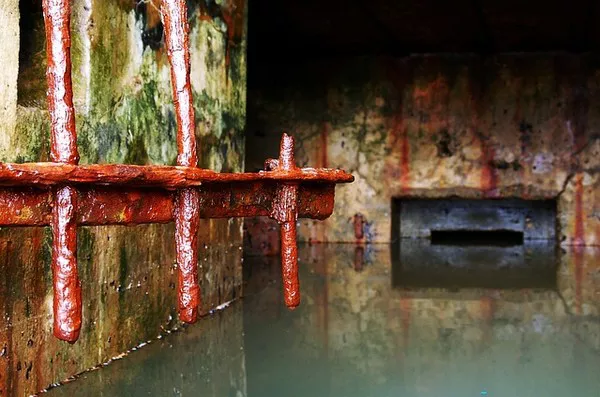Domestic sewage treatment plants (STPs) are crucial for managing household wastewater and ensuring environmental sustainability. With increasing urbanization and environmental awareness, the demand for efficient and reliable domestic sewage treatment systems has surged. Choosing the best domestic STP requires understanding various factors, including treatment efficiency, technology, cost, maintenance, and environmental impact. This article delves into these factors to identify what makes the best domestic sewage treatment plant.
Understanding Domestic Sewage Treatment
Domestic sewage treatment involves the removal of contaminants from household wastewater to produce an effluent safe for discharge into the environment or for reuse. The treatment process typically involves physical, chemical, and biological methods to remove solids, organic matter, nutrients, and pathogens. The main stages of treatment include primary, secondary, and tertiary treatment.
Primary Treatment: This involves the physical removal of large particles and sediments through screening and sedimentation.
Secondary Treatment: Biological processes break down organic matter using microorganisms. Common methods include activated sludge, trickling filters, and sequencing batch reactors.
Tertiary Treatment: Advanced treatment processes further purify the effluent, removing residual pollutants and pathogens.
Techniques include filtration, disinfection (e.g., chlorination or UV treatment), and nutrient removal (e.g., nitrogen and phosphorus).
Factors Influencing the Best Domestic Sewage Treatment Plant
1. Treatment Efficiency
The primary measure of an STP’s effectiveness is its ability to treat wastewater to a level that meets regulatory standards and environmental guidelines. The best STPs consistently achieve high removal rates of biological oxygen demand (BOD), chemical oxygen demand (COD), total suspended solids (TSS), and pathogens. Technologies like Membrane Bioreactors (MBR) and Moving Bed Biofilm Reactors (MBBR) are renowned for their superior treatment efficiencies.
2. Technology and Innovation
Advancements in treatment technologies have significantly enhanced the efficiency and reliability of domestic STPs. Modern systems often integrate multiple treatment processes to optimize performance. Key technologies include:
Membrane Bioreactors (MBR): Combines biological treatment with membrane filtration, offering high-quality effluent and compact design.
Sequencing Batch Reactors (SBR): Operates in cycles, providing flexibility and efficiency in treatment processes.
Moving Bed Biofilm Reactors (MBBR): Uses biofilm carriers to enhance biological treatment, offering resilience and adaptability.
Constructed Wetlands: A natural and sustainable approach, using vegetation and soil microorganisms to treat wastewater.
3. Cost and Affordability
Cost is a significant consideration for homeowners. The best domestic STPs balance initial installation costs with long-term operational and maintenance expenses. While advanced technologies like MBRs may have higher upfront costs, their operational efficiency and lower maintenance needs can offer cost savings over time. Conversely, simpler systems like septic tanks or constructed wetlands might have lower initial costs but require regular maintenance and monitoring.
4. Maintenance and Ease of Operation
A user-friendly system with minimal maintenance requirements is ideal for domestic use. The best STPs are designed for easy operation, with automated controls and remote monitoring capabilities. Regular maintenance tasks, such as sludge removal and equipment checks, should be straightforward and infrequent. Systems like SBRs and MBBRs are known for their robustness and ease of maintenance.
5. Environmental Impact
Sustainability is a key consideration. The best STPs minimize environmental impact by reducing energy consumption, chemical usage, and sludge production. Systems that integrate renewable energy sources, such as solar panels, further enhance sustainability. Additionally, the potential for effluent reuse in irrigation or toilet flushing contributes to water conservation efforts.
Evaluating Popular Domestic Sewage Treatment Plants
Membrane Bioreactors (MBR)
Pros:
- High treatment efficiency with excellent effluent quality.
- Compact design suitable for small spaces.
- Low sludge production.
Cons:
- Higher initial installation and operational costs.
- Requires skilled maintenance.
Sequencing Batch Reactors (SBR)
Pros:
- Flexible operation with adjustable cycles.
- Efficient nitrogen removal.
- Lower capital costs compared to MBR.
Cons:
- Requires more space than MBRs.
- Regular monitoring and maintenance needed.
Moving Bed Biofilm Reactors (MBBR)
Pros:
- High treatment efficiency with stable performance.
- Resistant to shock loads and fluctuations.
- Low maintenance requirements.
Cons:
- Moderate capital and operational costs.
- Requires periodic replacement of biofilm carriers.
Constructed Wetlands
Pros:
- Natural and sustainable treatment process.
- Low operational and maintenance costs.
- Enhances biodiversity and landscape aesthetics.
Cons:
- Requires significant land area.
- Performance can be influenced by weather and seasonal changes.
See also SEPTIC TANKS VS SEWER SYSTEMS: WHAT’S THE DIFFERENCE?
Conclusion:
Selecting the best domestic sewage treatment plant involves a careful evaluation of treatment efficiency, technology, cost, maintenance, and environmental impact. While there is no one-size-fits-all solution, certain systems stand out based on specific needs and priorities.
For households prioritizing high effluent quality and compact design, Membrane Bioreactors (MBR) are an excellent choice despite their higher cost. Sequencing Batch Reactors (SBR) offer flexibility and cost-effectiveness, making them suitable for varied treatment needs. Moving Bed Biofilm Reactors (MBBR) provide robustness and low maintenance, ideal for households seeking reliability. For those favoring sustainability and natural processes, Constructed Wetlands offer an eco-friendly solution.
Ultimately, the best domestic sewage treatment plant is one that aligns with the homeowner’s requirements, budget, and environmental values. By investing in the right STP, households can contribute to environmental conservation, public health, and sustainable water management, ensuring a cleaner and healthier future.

